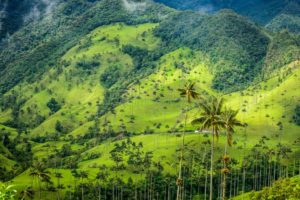South America is a continent of rich history, natural wonders and one of the highest bi-diversity on the Planet. from the pre-Columbian sites to the great Amazon. There are ten countries of South America, each varying greatly in climate and culture. Influence from Spanish and Portuguese colonists, as well as immigration from Africa, Asia and Europe has given additional layers to South American cultures. Some people carry on the traditions of their indigenous ancestors.
South America has three ecological regions: the eastern highlands, the Andes Mountains, and the river plain, including the Amazon River. Highlands take up over half of Brazil’s total area. These highlands and plateaus also contain spectacular waterfalls, many of which are in southern Venezuela.
The Andes Mountain is the largest mountain range on earth, stretching along the entire continent from Venezuela to the south of Argentina and Patagonia. It has active volcanoes, mineral deposits, and glaciers in the south.
The Amazon River is one of the best natural wonders of South America, and recognized as the heart and lungs of the planet. It runs about 4000 miles and can reach over 120 miles across. It is home to over 3000 species of fish, as well as piranhas and anacondas.
The Amazon runs through Guyana, Ecuador, Bolivia, Columbia, Peru, and, mainly, Brazil. Its huge towering trees and immense river are part of a fragile, yet powerful ecosystem that processes an incredible amount of the earth’s water and air.
Another major highlight of South America is Peru’s Machu Picchu. This lost Incan city a fascinating archaeological site, situated in an incredibly scenic cliff, and wilderness park, occupying about 115 square miles in total. A visit to this ancient ceremonial site of Cuzco, Peru is the excursion of a lifetime.
 TravellerHints!
TravellerHints! 

















